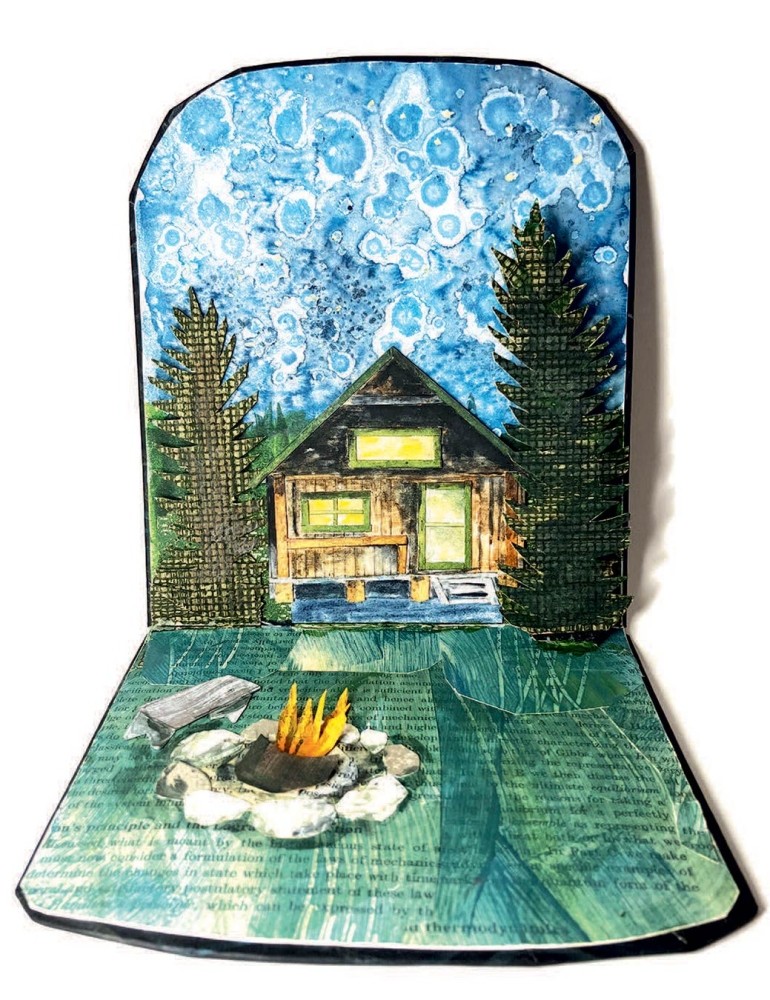The cook cabin sat in the middle of the campground, its front porch looking directly out across Kidney Pond and into the southern part of Baxter State Park. It fit perfectly between the old library and a row of cabins along the waterfront, providing an unobstructed view of the pond, the canoes, and, if I stayed out long enough, the sunset. The cabin windows were framed in painted green, the logs painted classic cabin brown, and the porch floor was a faded gray.
A few hundred feet from the cook cabin, obscured by woods, was the wall tent I called home for a year when I was 23 and the leader of a trail crew. The rest of my crew shared a bunkhouse cabin close to the campground. I liked my beige canvas tent, even when it rained – which was often that spring – and the inside felt like a mediocre sauna, dampening everything I owned. I liked the tent even though squirrels would drop from the cedars arching over the tightly pitched roof and skitter me awake each morning. I liked it because it gave me privacy and time away from the crew outside of our long days on the trail.
During the week, we built and maintained the hiking trails throughout the park. We constructed bog bridges through mud and mosquitoes. Amid swarming black flies, we meticulously maneuvered rock into a solid staircase up the Appalachian Trail as it climbed toward its final ascent of Katahdin. We cut out downed trees to open trails after storms.
Every weekend, the rest of the crew went into town to do their laundry, make calls on the payphone, eat poutine, go bowling, and drink beer among other people. I stayed back and spent my Saturdays making homemade pizza, sitting on that porch, watching the pond.
I’d wake with the squirrels and spring peepers, walk through the woods across the campground to the cook cabin, and drink coffee while making the dough. I never used any sort of measurements, just mixed honey, yeast, water, and flour, forming a baseball-size ball. I let the dough rise throughout the day while I paddled across the pond, hiked through the woods looking for trillium, or fished Nesowadnehunk Stream. By the time I came back in the early evening, the dough filled the bowl and I’d roll it out with a beer can on the indoor picnic table. Meanwhile, the Vulcan range stove, with its bright red t-knobs and stainless-steel exterior, preheated to 450 degrees.
I’d spread the sauce and mozzarella cheese before deciding on one of my three go-to toppings: pepperoni, pineapple and ham, or sausage and onions. Then I’d sit on the porch sipping a beer and watching the lake while the pizza cooked. I always timed the pizza to be done right around 6 o’clock and the start of A Prairie Home Companion. I’d wind the crank radio for a solid 5 minutes to earn 15 minutes of air time. In those 15 minutes, I could easily eat three or four slices of pizza. As the battery died, Garrison Keillor’s voice slowed to a long drawl. Before winding the radio again, I’d get a few more slices for the next 15 minutes of companionship. I did this for two hours until the end of the program when I’d let the radio fade and listen to the loons in the last light of the day.
This was the first time in my life I created a ritual that connected me so closely to the present moment and landscape.
Whenever I started to feel a pang of loneliness, I’d look over my left shoulder and see Katahdin staring back at me, or I’d trace the tapping of a yellow-bellied sapsucker through thick Maine woods. I came to understand what Thomas Merton meant when he wrote, “Solitude is not separation.” Sitting on the porch of the Kidney Pond cook cabin, everything that made up the surrounding ecosystem – Doubletop Mountain’s shadow slowly stretching across the campground, the silhouette of pine at dusk, an angler casting for brook trout as caddis flutterered across the still darkening surface of the pond, a loon calling for its mate – became my companions. I learned that sometimes it’s worth letting the radio die and listening to the world around you.


